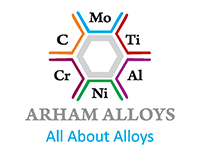In the world of mechanical engineering, pressure vessels, piping systems, and industrial manufacturing, ASME code compliance is not just a recommendation—it’s a fundamental requirement for safety, reliability, and quality. The American Society of Mechanical Engineers (ASME) has developed comprehensive codes and standards that serve as the backbone of engineering practices worldwide.
What is ASME Code?
ASME code represents a collection of technical standards developed by the American Society of Mechanical Engineers to ensure the safe design, fabrication, installation, inspection, and testing of mechanical equipment and systems. These codes are recognized globally and often incorporated into governmental regulations, making compliance mandatory in many jurisdictions.
Understanding ASME Codes and Standards
ASME codes and standards cover a wide range of engineering disciplines, from boilers and pressure vessels to nuclear components and piping systems. Each ASME code is meticulously developed by committees of industry experts, engineers, and regulatory professionals who continuously update these standards to reflect technological advancements and safety improvements.
The relationship between ASME standards and codes is complementary—while codes are mandatory requirements for construction and safety, standards provide recommended practices, testing methods, and technical specifications that support code compliance.
Comprehensive ASME Code List
Here’s a detailed ASME code list covering the most widely used standards in industrial applications:
ASME Section I – Power Boilers
This ASME code governs the construction of power, electric, and miniature boilers. It applies to boilers that operate at pressures exceeding 15 psig and are used for generating steam for external applications. Section I ensures that boilers are designed, fabricated, and inspected to prevent catastrophic failures.
ASME Section II – Materials
ASME Section II is divided into four parts covering ferrous materials, non-ferrous materials, welding rods and electrodes, and material properties. This code provides specifications for materials used in pressure vessel and piping construction, ensuring compatibility and safety.
ASME Section III – Nuclear Facility Components
This highly specialized ASME code addresses the construction of nuclear facility components, including reactor vessels, containment systems, and piping. It has the most stringent requirements due to the critical nature of nuclear safety.
ASME Section IV – Heating Boilers
Section IV covers low-pressure heating boilers with design pressures not exceeding 160 psig and temperatures not exceeding 250°F. These are commonly used in residential and commercial heating applications.
ASME Section V – Nondestructive Examination
This code establishes requirements and methods for nondestructive examination (NDE) including radiographic, ultrasonic, magnetic particle, liquid penetrant, and visual testing methods used to verify the integrity of components.
ASME Section VIII – Pressure Vessels
One of the most widely referenced codes, ASME Section VIII is divided into three divisions:
- Division 1: General requirements for pressure vessel design and construction
- Division 2: Alternative rules with more detailed design requirements
- Division 3: Alternative rules for high-pressure vessels
This ASME code ensures that pressure vessels can safely contain internal pressure and prevent failures that could result in explosions or hazardous material releases.
ASME Section IX – Welding and Brazing Qualifications
Section IX establishes requirements for welding and brazing procedure specifications (WPS) and performance qualifications (PQR). This code ensures that welders and welding procedures meet minimum competency standards.
ASME Section X – Fiber-Reinforced Plastic Pressure Vessels
This code provides requirements for the design, fabrication, inspection, and testing of fiber-reinforced plastic (FRP) pressure vessels.
ASME Section XI – Rules for Inservice Inspection of Nuclear Power Plant Components
Section XI provides rules for inservice inspection, repair, and replacement of nuclear power plant components to ensure continued safe operation throughout the plant’s lifetime.
ASME Section XII – Transport Tanks
This code covers the construction, inspection, and testing of transport tanks used for hauling hazardous materials.
ASME Codes for Piping Systems
ASME codes for piping are among the most critical standards in industrial applications. The primary piping codes include:
ASME B31.1 – Power Piping
This code covers piping systems found in electric power generating stations, industrial and institutional plants, and central and district heating plants. It addresses the design, materials, fabrication, assembly, erection, testing, and inspection of power piping systems.
ASME B31.3 – Process Piping
The most widely used ASME code for piping in petroleum refineries, chemical plants, pharmaceutical plants, and related processing facilities. B31.3 covers piping systems that transport fluids under various pressures and temperatures.
ASME B31.4 – Pipeline Transportation Systems for Liquids and Slurries
This code applies to liquid petroleum pipelines, crude oil, natural gas liquids, carbon dioxide, and slurry transportation systems.
ASME B31.5 – Refrigeration Piping and Heat Transfer Components
Covers piping systems used in refrigeration applications, including refrigerant piping in industrial and commercial facilities.
ASME B31.8 – Gas Transmission and Distribution Piping Systems
This code addresses the design, fabrication, installation, inspection, and testing of natural gas transmission and distribution systems.
ASME B31.9 – Building Services Piping
Covers piping systems typically found in industrial, institutional, commercial, and public buildings that are not covered by other B31 codes.
ASME B31.12 – Hydrogen Piping and Pipelines
A relatively new addition to ASME codes for piping, this standard addresses the unique challenges of hydrogen transportation and distribution systems.
Why ASME Code Compliance Matters
Adherence to ASME code requirements provides numerous benefits:
- Safety Assurance: ASME codes are developed with safety as the paramount concern, protecting workers, facilities, and the public
- Legal Compliance: Many jurisdictions require ASME code compliance by law
- Insurance Requirements: Insurance companies often mandate ASME compliance for coverage
- Quality Guarantee: Products manufactured to ASME standards meet internationally recognized quality benchmarks
- Market Access: ASME certification enables access to global markets
- Risk Mitigation: Proper code compliance reduces liability and operational risks
Industries Relying on ASME Standards and Codes
ASME standards and codes are essential across multiple industries:
- Oil and Gas: Refineries, pipelines, and processing facilities
- Chemical Processing: Chemical plants and petrochemical facilities
- Power Generation: Conventional and nuclear power plants
- Manufacturing: Industrial equipment and machinery
- Pharmaceuticals: Process piping and pressure vessels
- Food and Beverage: Sanitary piping systems
- HVAC: Heating, ventilation, and air conditioning systems
- Marine: Shipboard piping and pressure systems
Staying Current with ASME Code Updates
ASME codes and standards are living documents that undergo regular revisions and updates. The ASME committee structure continuously evaluates technological advancements, incident investigations, and industry feedback to improve safety and performance standards. Organizations must stay informed about code revisions and ensure their operations comply with the latest editions.
Certification and Documentation
Compliance with ASME code requirements typically involves:
- Design calculations and documentation
- Material certifications and traceability
- Qualified welding procedures and welder certifications
- Third-party inspection by Authorized Inspectors
- Pressure testing and non-destructive examination
- ASME stamp application and data report filing
The ASME stamp on a product serves as visible proof that the item was designed, fabricated, and inspected in accordance with applicable ASME codes.
The Future of ASME Codes
As industries evolve with new materials, manufacturing technologies, and applications, ASME codes and standards continue to adapt. Recent developments include enhanced standards for additive manufacturing, hydrogen systems, and advanced materials. The integration of digital technologies and artificial intelligence into inspection and monitoring processes is also influencing future code revisions.
Arham Alloys: Committed to ASME Code Excellence
At Arham Alloys, we understand that quality and safety are non-negotiable in industrial applications. That’s why all our products are manufactured in strict accordance with applicable ASME codes and standards. Our commitment to ASME code compliance ensures that every component we produce meets the highest standards of quality, reliability, and safety.
Whether you need materials for pressure vessels, piping systems, or other critical applications, Arham Alloys provides certified products that conform to the relevant ASME code requirements. Our quality management system ensures full traceability, proper documentation, and adherence to all code specifications, giving you confidence in the integrity of our products.
When you choose Arham Alloys, you’re choosing a partner dedicated to engineering excellence and code compliance—because safety and quality matter.








